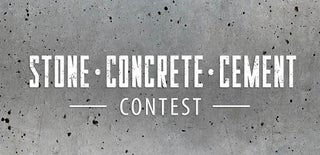Introduction: Concrete Outdoor Fire With Steel Base
This is a project we made in class last semester. The objective was to find a product that got it's value in the design but is made of cheap, available material.
My students chose an outdoor concrete fire they found on Amazon selling for 69€ or 135€ including the steel base.
Motivation was splendid, spirits were high as everybody wanted to create their own cast for cheap.
Step 1: Materials
We did 2 hours of theory including steel reinforcement, formwork, mixture, physical and chemical properties of concrete, statics and a lot of examples of concrete used in architecture throughout history.
The kids wanted to create a very clean product in natural color so they chose a concrete mix with a very fine aggregate.
For the mould we used what was on hand, some boards and screws.
After the concrete parts were finished we also did the stand/base. For those some steel profile is needed. The kids just grinded down the welds a little for the same look as in the original.
You will also need some glasswool for the permanent wick, some wire to hold it into place and wax for fuel.
Step 2: The Mould and the Concrete Part
The students built two different moulds.
The first was upside down with the idea of pouring the concrete from the bottom so that any bubbles would only be visible at the bottom. The first form was very hard to open and the resulting object wasn't as clean as desired.
The second mould with the cavity created by a second form that was pushed/screwed in from aboveresultet in a much cleaner product.
We used an orbit sander to create an ad hoc vibrating plate. We also used some sticks in the drill to get the concrete to flow in all corners and to get out some more bubbles.
We deformed every other day until we had enough candles done.
Some sanding was done for an even smoother surface. The students are very pleased with the results ans so am I.
Step 3: The Wick and the Wax
There is a permanent wick available for the original. We are very cheap so we just tried to create our own.
In German there are permanent candles called "Kerzenfresser" (Candle Eater). You can just dump more wax in the molten wax and it will all melt and burn up. Sometimes they also got a permanent wick made out of glass fiber, some got a wick in a metal pipe so that the wax around it will melt faster.
The metal pipe is not really needed, it just conducts heat from the wick into the wax better. The original wick is approximately a cube of 4cm so we just used some glasswool, soaked it in molten wax and secured it with some steel wire.
for the wax we just melted old candles in a pot and poured it in a rectangular form willed with backing paper. You can put your wick in that first plate of wax. For more fuel just poor rectangular plates and cut an opening in the middle.Just drop that in your concrete candle once almost all wax is burned up.
I didn't know if this would work as intended so I tested that part at home with my kids...they love it and we needed all help to blow it out again. (Some metal cup on a stick comes in handy to extinguish the hellfire you just created).
You can make the wick any size you like, it also burns almost smoke free.
Step 4: Finished Concrete Form and Base
The base was welded last. The kids already had done some welding before. Since nobody really cared for a base we only did one for an exhibition piece at the school art show.
Step 5: Conclusion
I will do this again in class. The students really liked the moulding process and love that they can create a 70€ product for the price of some concrete.
It was also very nice to have them try different molds. Coated plywood might give an even better finish.
This is also a nice present for anybody with a garden, balcony or terrace.
Next time I want to try to embed glass fiber strands into the object and try to get the candle to shine through the concrete. Translucent concrete is definitely on my bucket list.
Step 6:

Participated in the
Stone Concrete and Cement Contest













